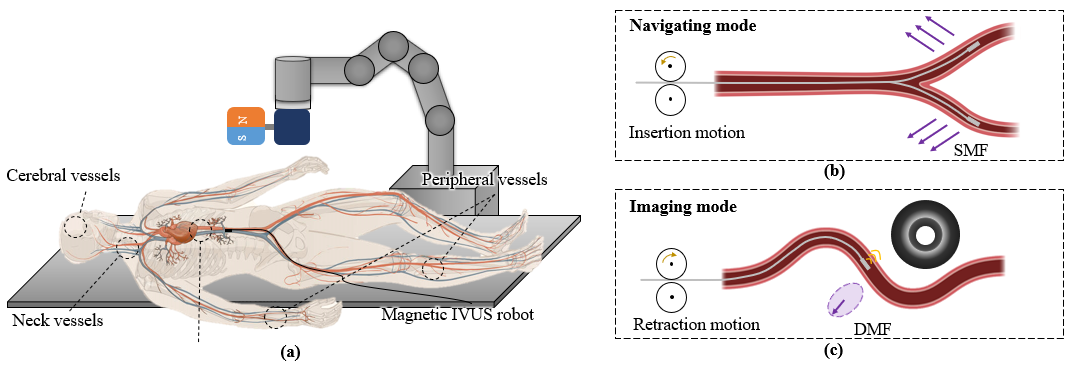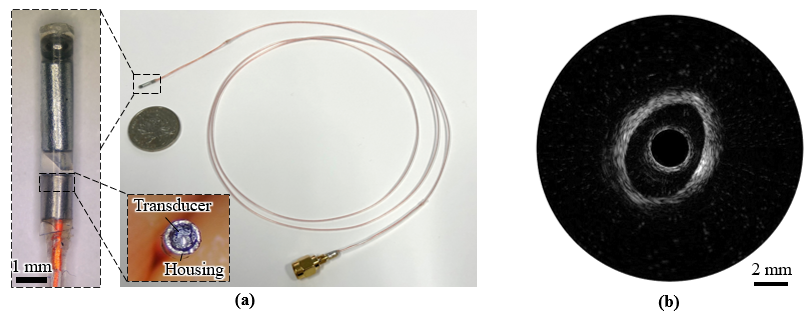A research group from Suzhou Institute of Biomedical Engineering and Technology (SIBET) of the Chinese Academy of Sciences (CAS) developed a dual-mode magnetic IVUS robot with both small size and high flexibility.
Intravascular ultrasound (IVUS) utilizes guidewire technology to deliver a miniature ultrasound probe into blood vessel, which can provide cross-sectional vascular ultrasound images. Its clinical value has been worldwide recognized.
However, the miniature single-element ultrasound probe of traditional IVUS is driven by an outside-placed motor through a long flexible shaft, and faces challenges while imaging in complex vascular regions, such as inflexible manipulation and non-uniform rotation distortion (NURD).
Therefore, exploring a novel IVUS catheter with flexible manipulation and stable imaging in complex vascular areas is necessary for accurate diagnosis and treatment of cardiovascular and cerebrovascular diseases.
The dual-mode magnetic IVUS robot developed by the SIBET team consists of a front tip and a back catheter. The design eliminates the long flexible shaft structure, which brings the robot small size and high manipulation flexibility.
In the navigating mode, the robot performed controlled bending under the actuation of static magnetic fields, actively entering the target branch at the bifurcated blood vessel. In the imaging mode, it completed stable acoustic beam scanning under the actuation of dynamic magnetic fields, providing high-resolution ultrasound images.
“The dual-mode magnetic IVUS robot improves both operational flexibility and imaging stability during the intervention procedure, providing a potential solution for the visualization of complex vascular structures,” said CUI Yaoyao, leading researcher of the study, from SIBET.
The results of the above study entitled “Development and Control of a Dual-Mode Magnetic Intravascular Ultrasound Robot for Imaging in Tortuous Blood Vessels” was published in the recent issue of IEEE/ASME Transactions on Mechatronics.

Fig. 1. Schematic diagram of the magnetic IVUS robot. (Image by SIBET)

Fig. 2. Prototype IVUS robot and its imaging result. (Image by SIBET)
Contact
XIAO Xintong
Suzhou Institute of Biomedical Engineering and Technology, Chinese Academy of Sciences (http://www.sibet.cas.cn/)
Phone: 86-512-69588013
E-mail: xiaoxt@sibet.ac.cn